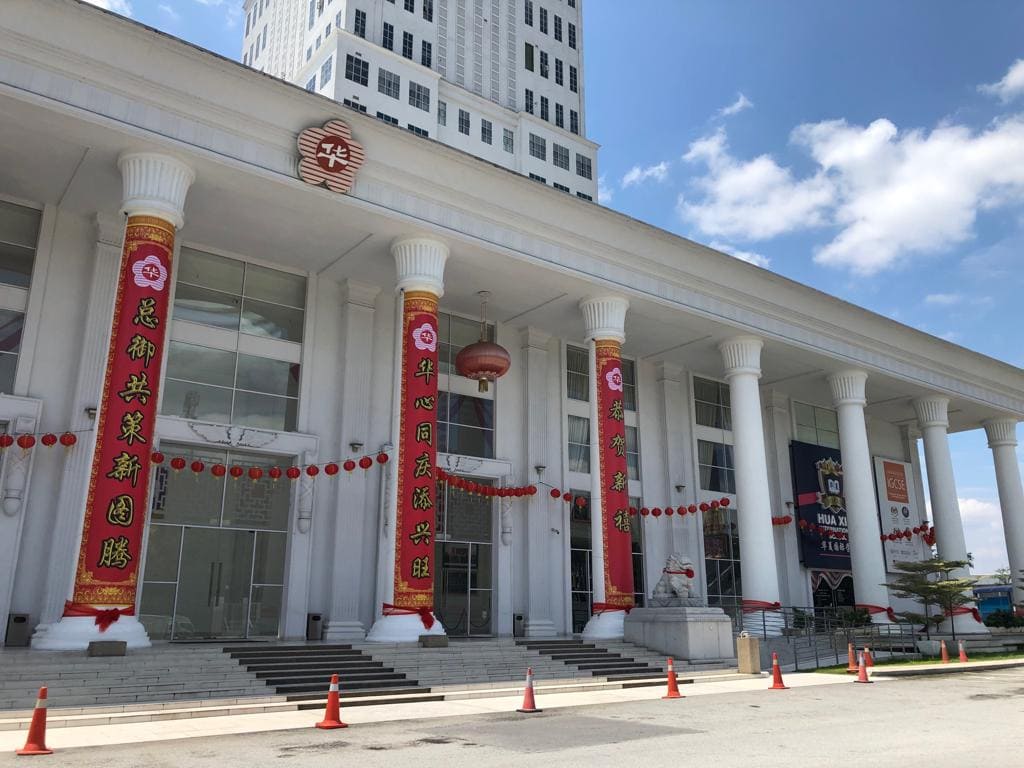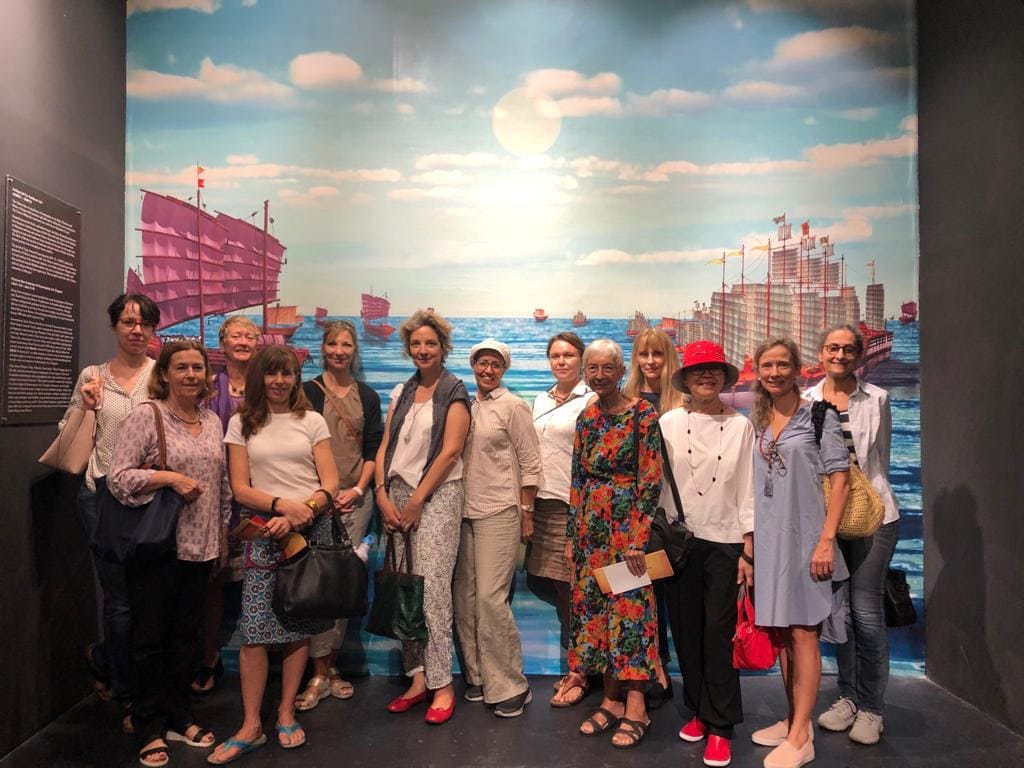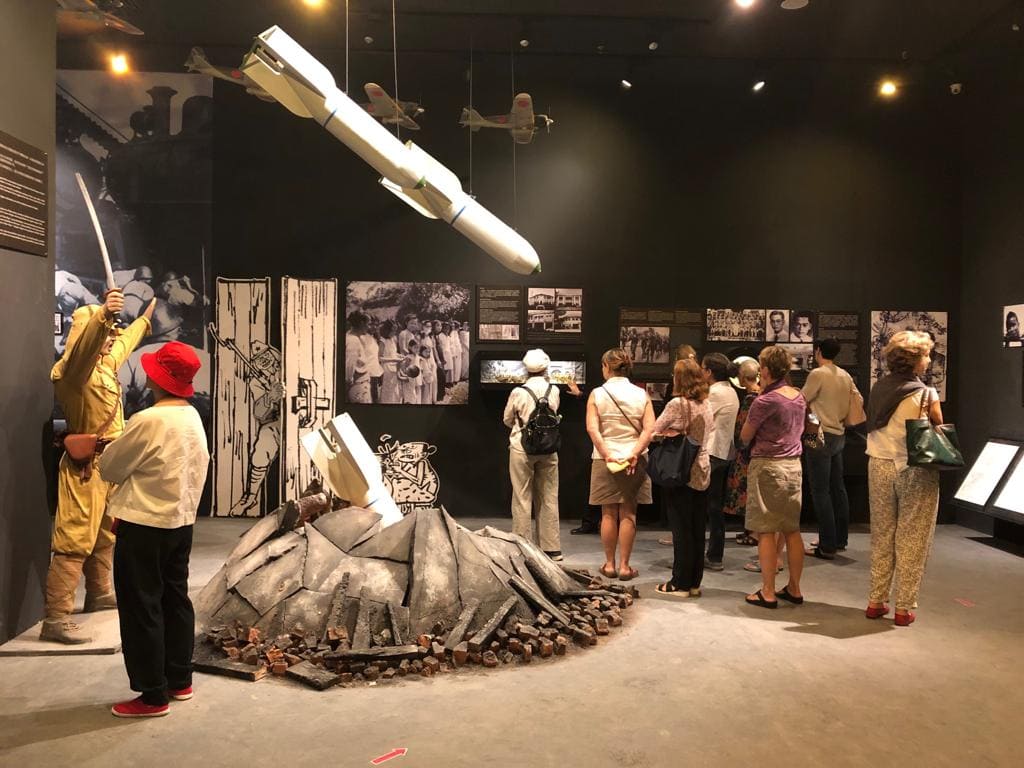Visit to the Malaysian Chinese Museum, 11th March, 2019

The history of Malaysia is not complete without including the incredible influence and contribution made by the Chinese community. The Malaysian Chinese Museum, which only opened its doors in May last year, provides a record of the struggles, hardships and successes of the Chinese community and the impact their culture and history has had and continues to have on the Malaysia we all know today.
Thirteen of us were expertly guided through a well choreographed maze of exhibits. The museum presents its collection in a chronological order walking the visitor through the various stages of how the Chinese came to settle in Malaysia. It begins with their trials and tribulations involved in sailing the rough seas, through to showcasing their entrepreneurial talents to their involvement in defence to modern day politics. The importance of their Chinese roots through their historically and culturally important customs and traditions is also highlighted and is a significant part of their heritage.
It would be remiss of me not to mention the very large white palace-like building that houses the museum. The endlessly tall pillars which offer shade to the long balcony are impressive if for no other reason than their sheer height and stunning simplicity. The museum is situated on the first floor and shares the building with two schools.
The entrance is reminiscent of a traditional Chinese home which opens into a foyer. Our visit began with a ten minute video after which we began our tour in a mocked-up ship cabin featuring beautiful wood panelling. However it was the naval chart used in bygone years that caught my attention. A long rectangular scroll stretched for eternity along the wood panelled wall complete with folds in it. It was covered in an orange and yellow pattern of dragons and flowers with a thin strip running through the middle of it – and it is this strip that is the naval chart that was used as a guide for the ships in days gone by. It is adorned with sketches of mountains, clusters of houses, churches, rivers and other drawings indicating features particular to a certain country’s coastline – and using only this as her point of reference our guide confidently led us from China, down the Vietnamese coast, along to Cambodia, down the east coast of Malaysia, up to Myanmar and eventually to India. How different this naval chart is compared to today’s electronic navigation systems!

As we progressed through the museum we were treated to life-size reconstructions depicting important points in their rich history. We saw a mocked-up rubber tree being milked, a manager overseeing his coolies, a traditional wedding carriage and scenes of the various businesses they created in order to gain their financial independence - scenes of a hairdresser, leather maker, butcher, bike repairer, shoe-maker, fortune teller to name but a few. A model of tin mining is on display highlighting the importance of mining in the history of Malaysia and the role the Chinese played in its development and operation. A war zone area of the museum honours the role of the Chinese involvement throughout troubled times.
The museum is honest in its portrayal of the Chinese, including scenes that we would perhaps like to turn a blind eye to, but are indeed a very real part of everyday life. Artwork adhering to prostitution, suicide and the dependency on opium prompt reflection that life was not always easy for many of the Chinese settling down in Malaya. Scenes showing the disturbing practice of foot binding, including the tiny toy-like shoes were on display to remind us of the horror, excruciating pain and deformations that resulted from an ancient belief that small feet were considered attractive and made the women sway (as opposed to walk) beautifully from side to side like a lotus flower blowing in the wind.

The Malaysian Chinese Museum serves as a reminder of the contribution and sacrifices made by the Chinese community in the development and evolution of Malaysia. The exhibitions provide a wonderful insight into the history and culture of Chinese migration into Malaysia highlighting challenges and successes in the process of settling down and making a new life here. The spirit of the Chinese community can be felt at every turn. It is indeed a wonderful opportunity for the Chinese to preserve their involvement in the history of Malaysia - and is without a doubt a must-see for locals and foreigners alike.
Jane Bircher
